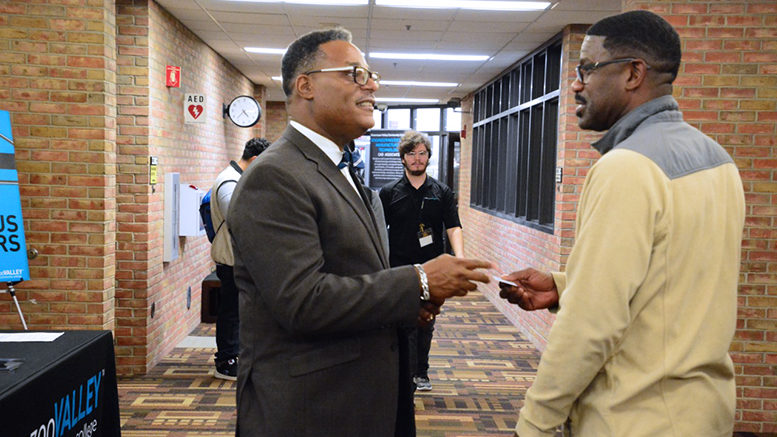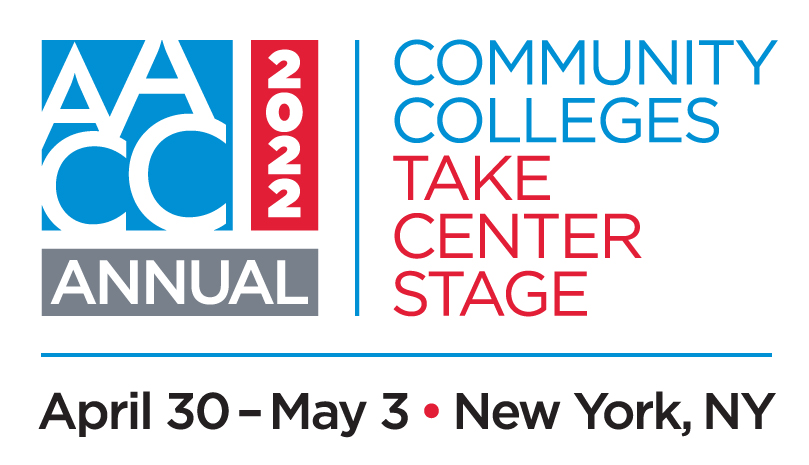Out of approximately 1,200 community colleges in the U.S., about 10% currently have Black chief executives — and more than 25% of that group has participated in the Lakin Institute for Mentored Leadership, a national professional development activity sponsored by the Presidents’ Round Table of African-American CEOs of Community Colleges.
On May 2 during the American Association of Community Colleges’ (AACC) 2022 Annual conference, attendees will hear about how the Lakin Institute has achieved its results through an innovative curriculum and overall approach, what the details of the curriculum entail, and why developing a pipeline of Black leaders remains a high priority against the backdrop of both looming retirements and a national focus on diversity, equity and inclusion.
The annual Institute began in 1994 and was named after the late Thomas A. Lakin, a one-time chancellor of the Ventura Community College District (California) and, prior to that, president of Los Angeles Southwest College, who was known for identifying and promoting diverse leaders at two-year college.
The institute provides an intensive weeklong professional development opportunity followed by, typically, a year of as-needed mentoring for African-Americans with ambitions of becoming chancellors, presidents and CEOs, said Kimberly Beatty, chancellor of Metropolitan Community College in Kansas City, convener for the Presidents’ Round Table and one of the co-presenters of the AACC conference session.
“We see it as our responsibility to continue to develop, and invest in, and cultivate the next round of Black leaders,” said Beatty, an AACC board member who previously served as vice chancellor and chief academic officer of Houston Community College and associate vice chancellor of Tarrant County College in Fort Worth, Texas. “One of the [acceptance] criteria is that they report to the CEO, and/or have the support of the CEO [of their current college].”
The percentage of current Black community college presidents who have attended Lakin “is a good indicator of the success of the institute, and how it can be a model for other underrepresented populations,” she added. “There’s still the philosophy out there that there’s not enough Black people who are qualified. And there really are. We have a pipeline we have been developing to support that.”
A resource for new leaders
The Lakin Institute — which is squarely on the radar screen of executive search firms helping two-year colleges hire new leaders — links its fellows with current sitting presidents over the subsequent year or so, developing a mentor-mentee relationship, said Marshall Washington, president of Kalamazoo Valley Community College (Michigan), secretary of the Presidents’ Round Table, dean of the Lakin Institute and the other co-presenter at the AACC Annual session.
“They gain advice from current Black CEOs along that pathway of securing the position,” said Washington, who formerly was president at New River Community and Technical College in West Virginia, and vice president and CEO at the Lancaster campus of HACC, Central Pennsylvania’s Community College. “Many folks maintain relationships and mentorships beyond that Lakin experience. We don’t necessarily, as the Presidents’ Round Table, keep track.”
Part of the value of the institute, both during the weeklong intensive sessions and the ad-hoc, one-on-one mentorship that follows, is how the effort strives to “keep it real” with fellows around the particular dynamics of what it means to serve as a Black executive in America — or “leading while you’re Black,” as Washington put it.
“You do that on a regular basis dealing with your board, dealing with community members,” he said. “We talk about scenarios that may happen — what about this? How do you get through this? How do you plan for this?”
Mock interviews and more
Lakin fellows participate in a mock job interview with a panel of community college presidents and sometimes board members, Washington said.
“Those are really enlightening activities for the fellows,” he said. “They feel like, ‘I learned some new information about phrasing a particular statement, or question, providing enough information to fully detail my experience regarding that question.’ We get into discussions around how you need to be doing certain things, so a fellow can have a successful interview.”
“We prepare our mentees to be above-and-beyond the best,” Beatty added. “We do what’s necessary to prepare them for the interview. That Black lens that other people may not have, which points to the ‘leading while Black’ piece, is an important aspect. That’s what distinguishes our program against others.”
Washington said he sees community college board members and other leaders as the primary audience for the AACC session.
“We have a number of community colleges being led by individuals who are not African-Americans — but they have African-Americans who are vice presidents and deans,” he said. Those board members and current CEOs “are the folks who put those [rising leaders] into the pipeline.”
Succession planning
The session also should hopefully inspire current Black executives at two-year colleges to think about a succession plan, Washington said.
“We all should be working toward replacing ourselves, and not think we are going to be here [forever],” he said. “We should be planning on who should be leading our institutions — and not just our institutions, but our regions and our entire profession.”
“There’s an inequitable amount of diversity [currently in leadership], and there’s a lot of talent out there,” Beatty added. “We want to bring them into leadership. … We want to have those who are ready to come in behind us.”
Doing so demonstrates to everyone on community college campuses — administrators, staff, faculty and students — the importance of diversity in carrying out the overall mission of two-year colleges to serve the entire tapestry of their populations, Washington said.
“We should be not only helping those folks advance in their careers, but also trying to help communities of the underserved,” he said. “We can do that by serving our leaders across the entire world of community colleges. We’re building pipelines to bring in folks who identify with serving underrepresented populations.”
In addition to talking about the Lakin Institute, the AACC conference session will touch on other aspects of the work of the Presidents’ Round Table, including the Men of Color Leadership Institute, aimed at students interested in becoming future leaders, Washington said.
“Our premise for starting that was that we wanted to provide role models and mentors for students in community college,” he said. “Get on the ramp to higher education and build your trajectory for your own education and career. That could possibly lead to the presidency of one of our community colleges, although it’s not directly geared toward that outcome.”


